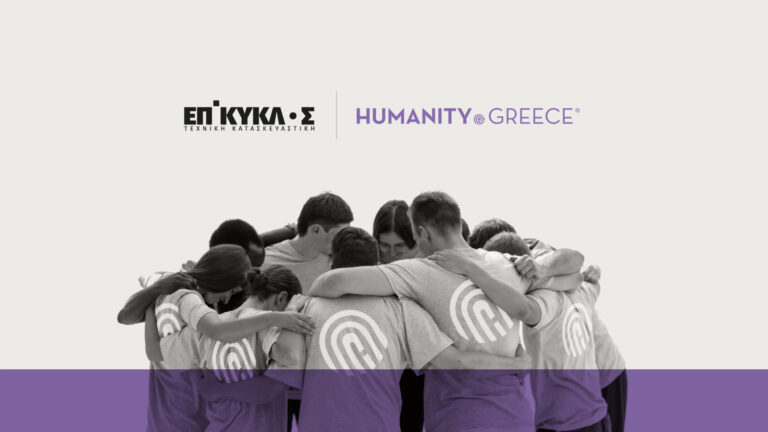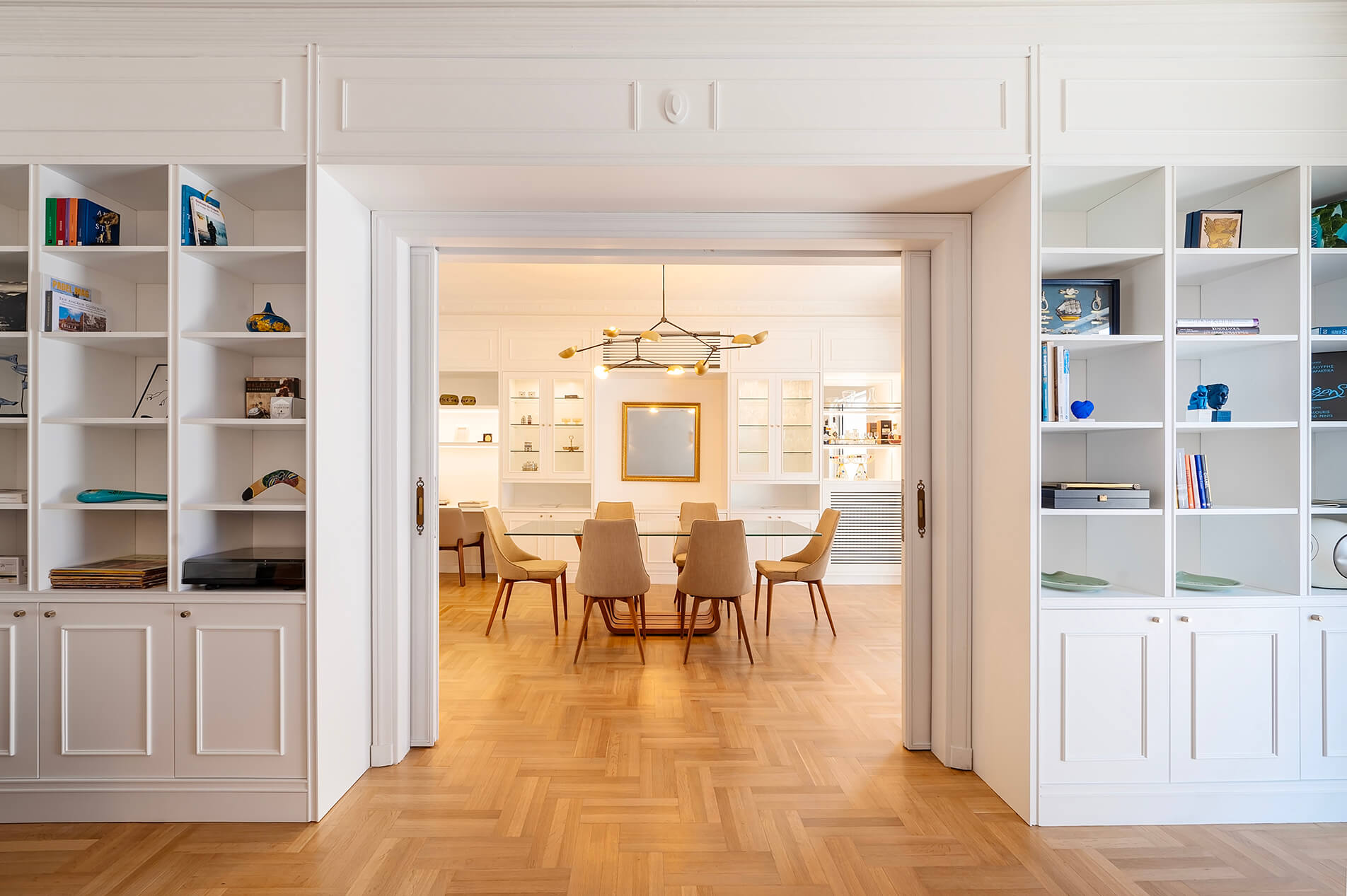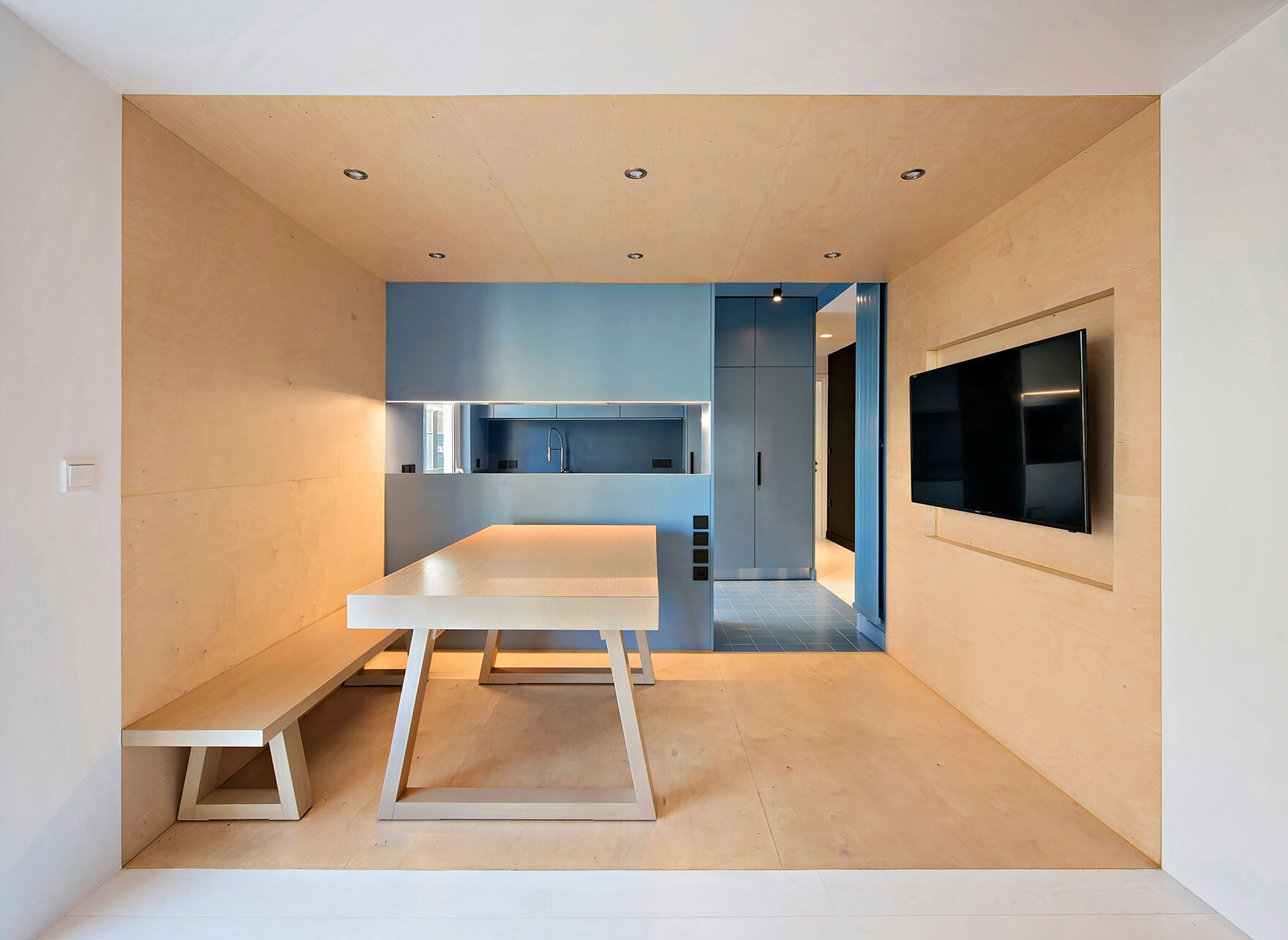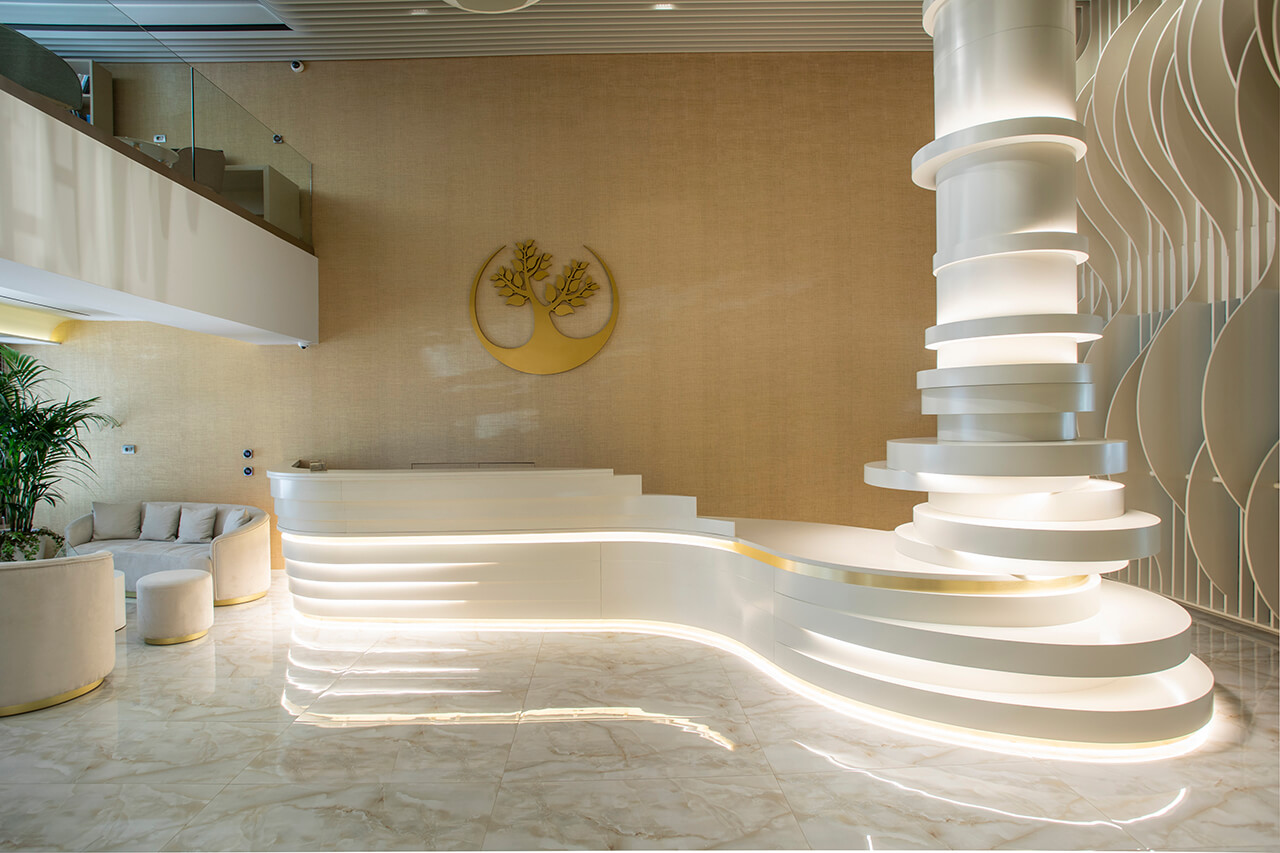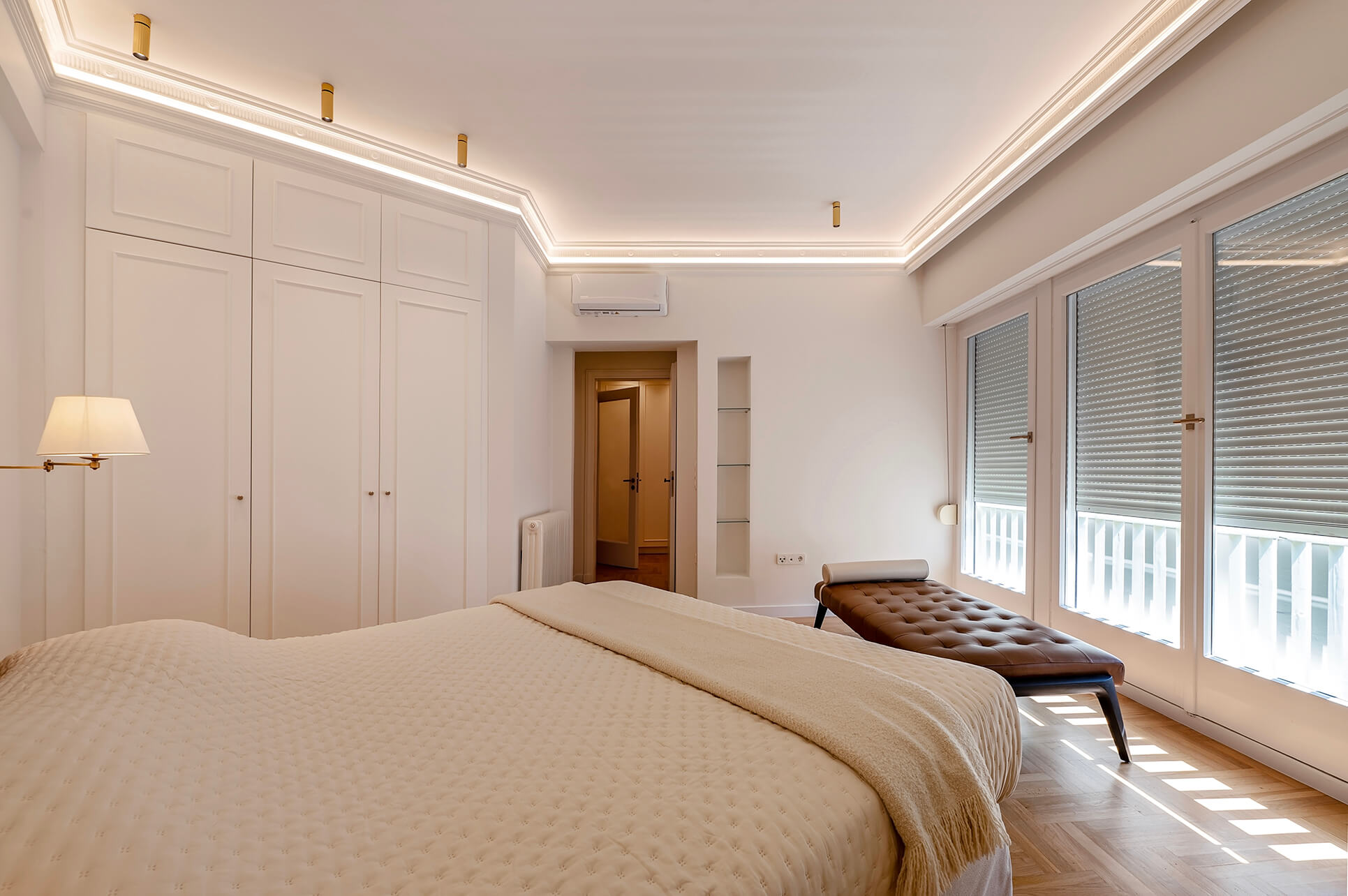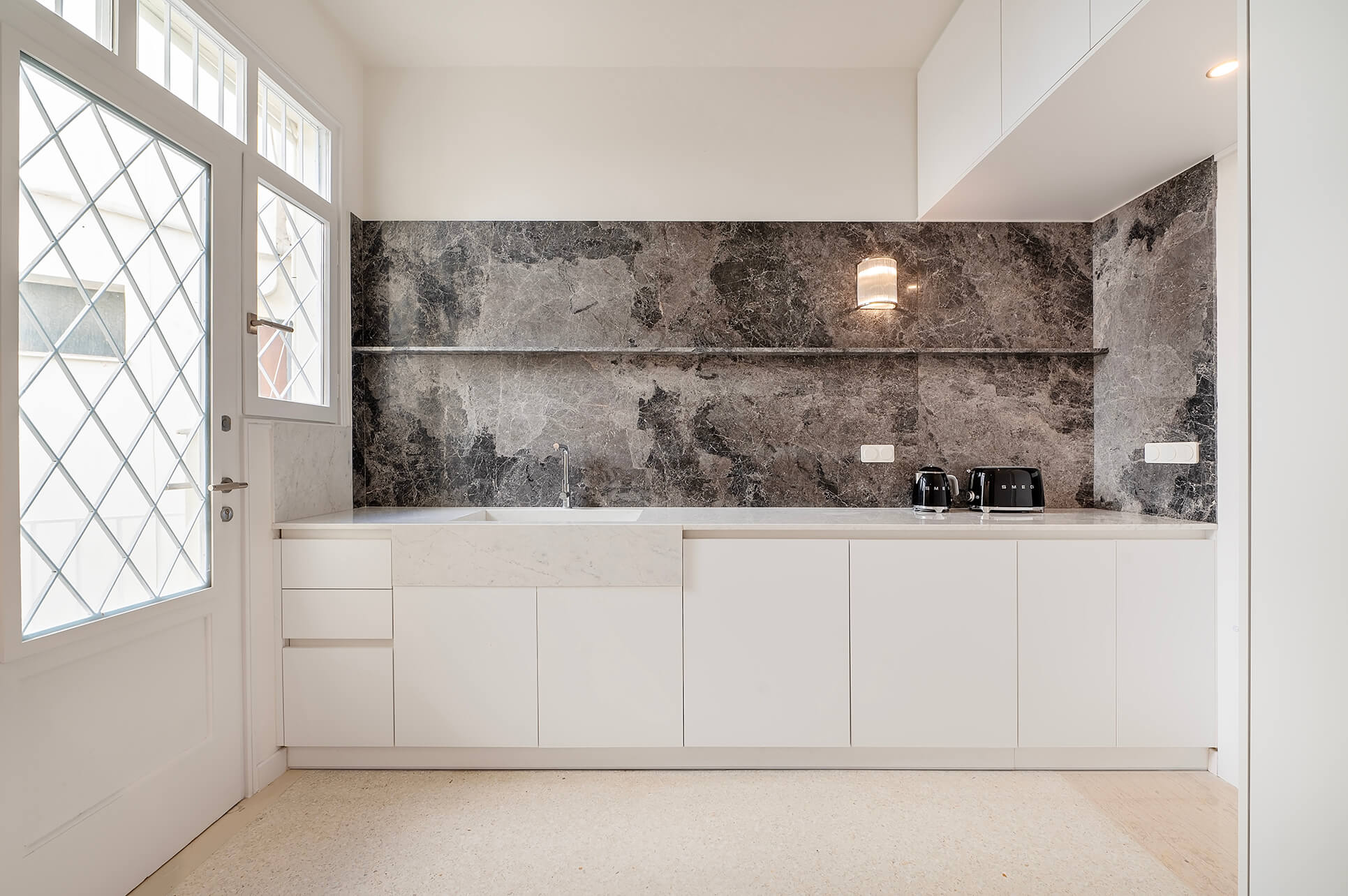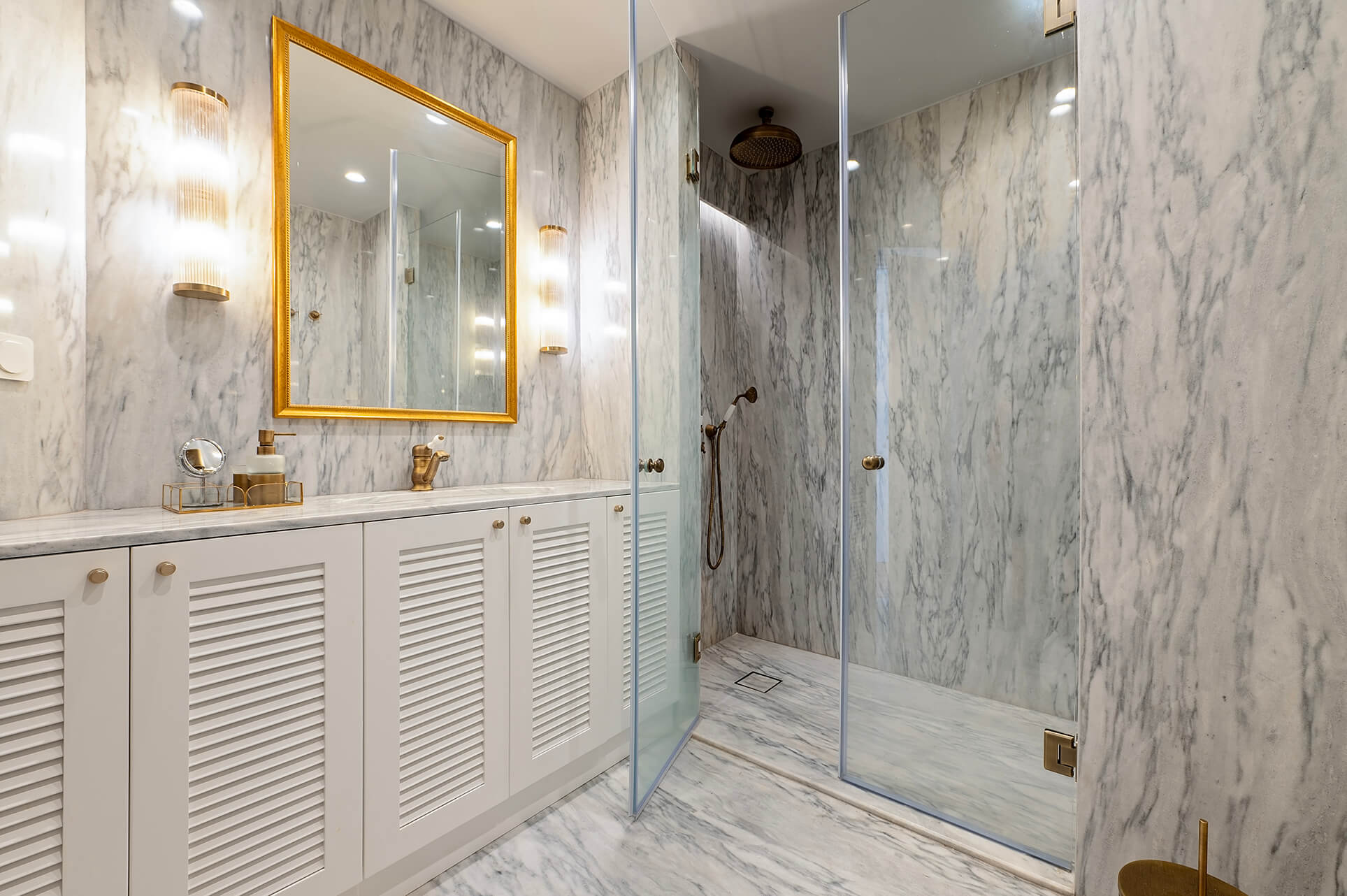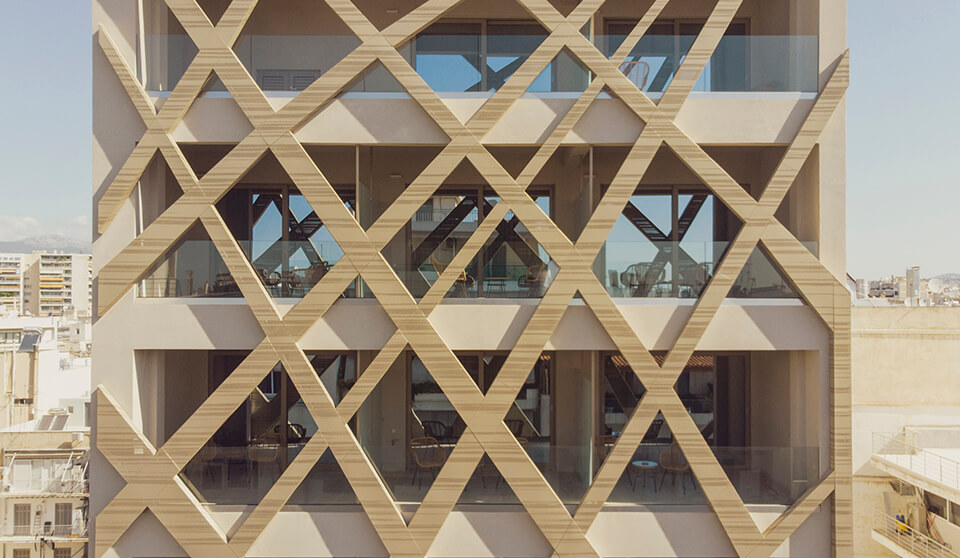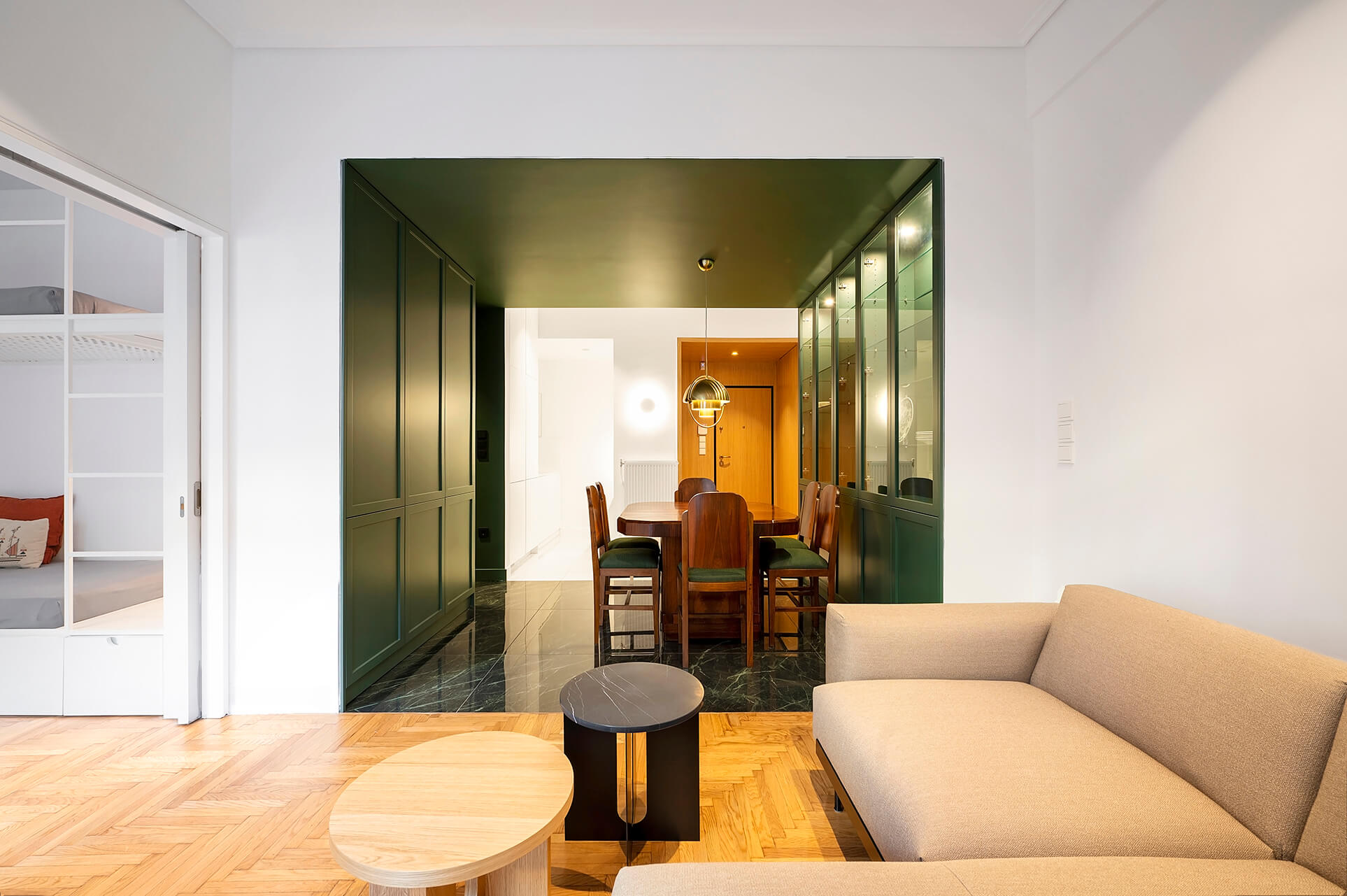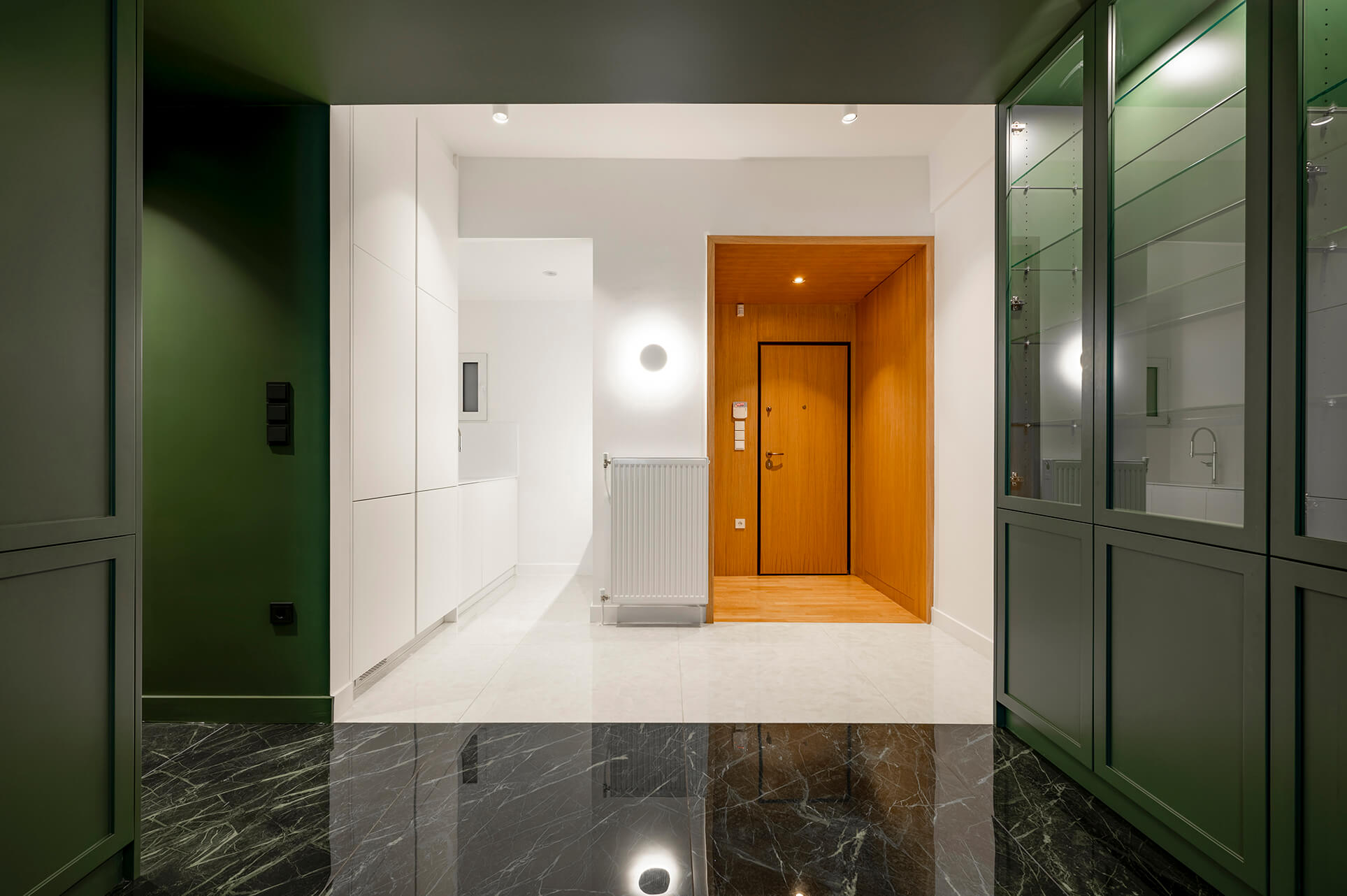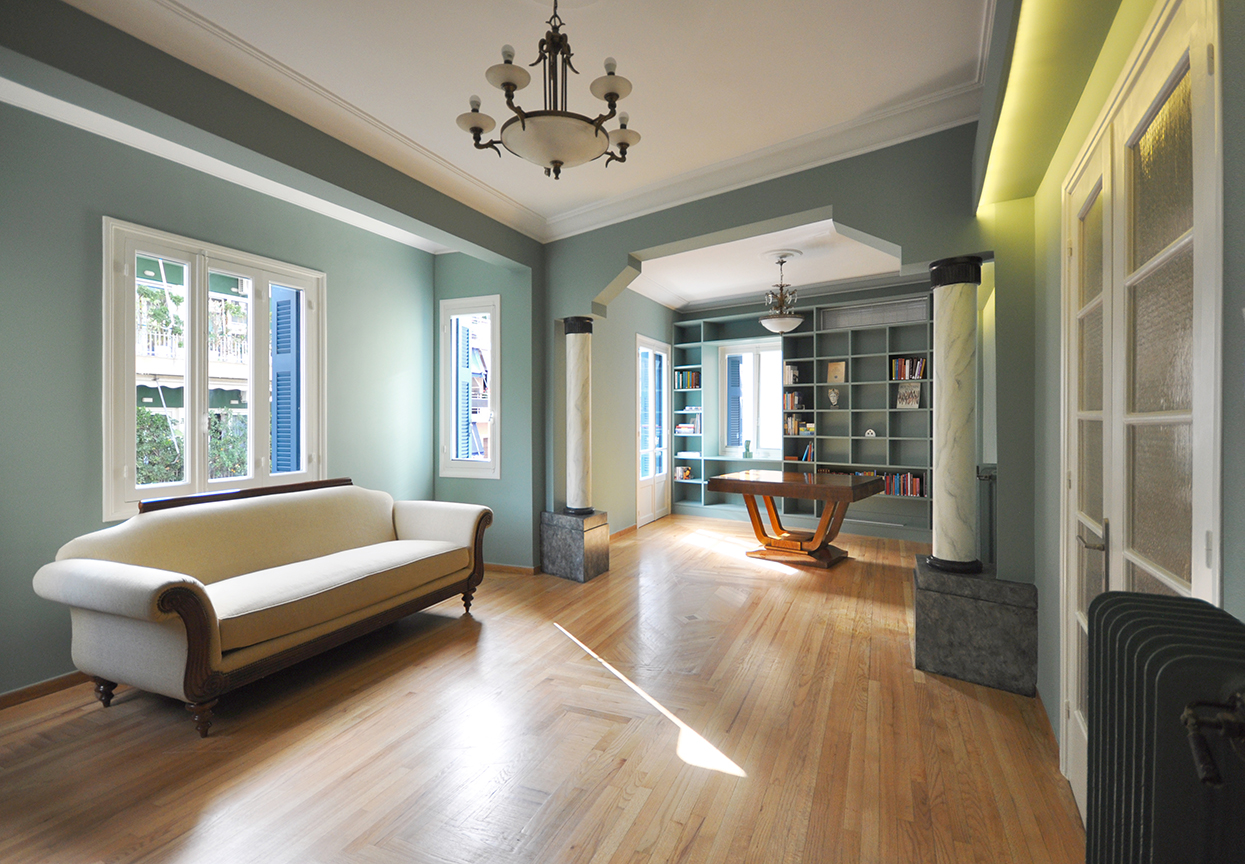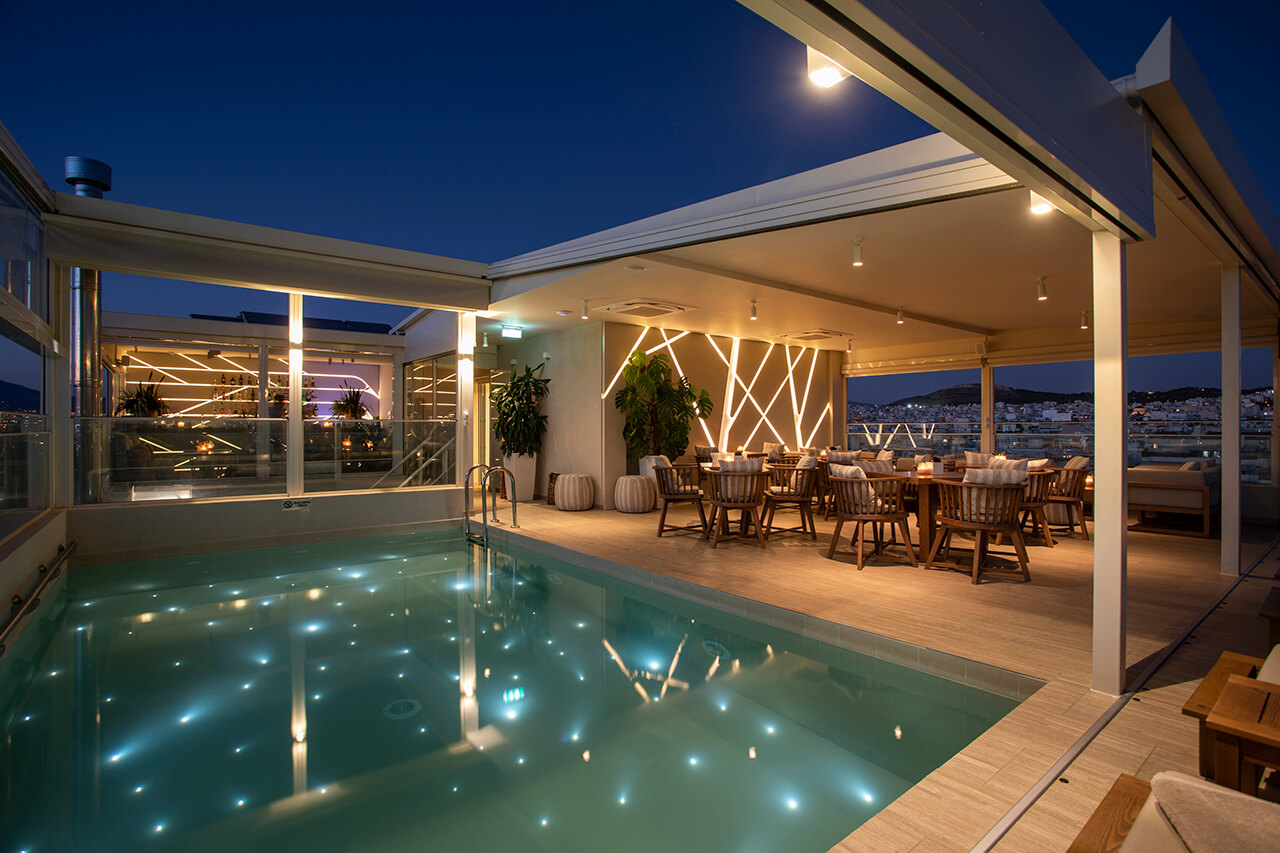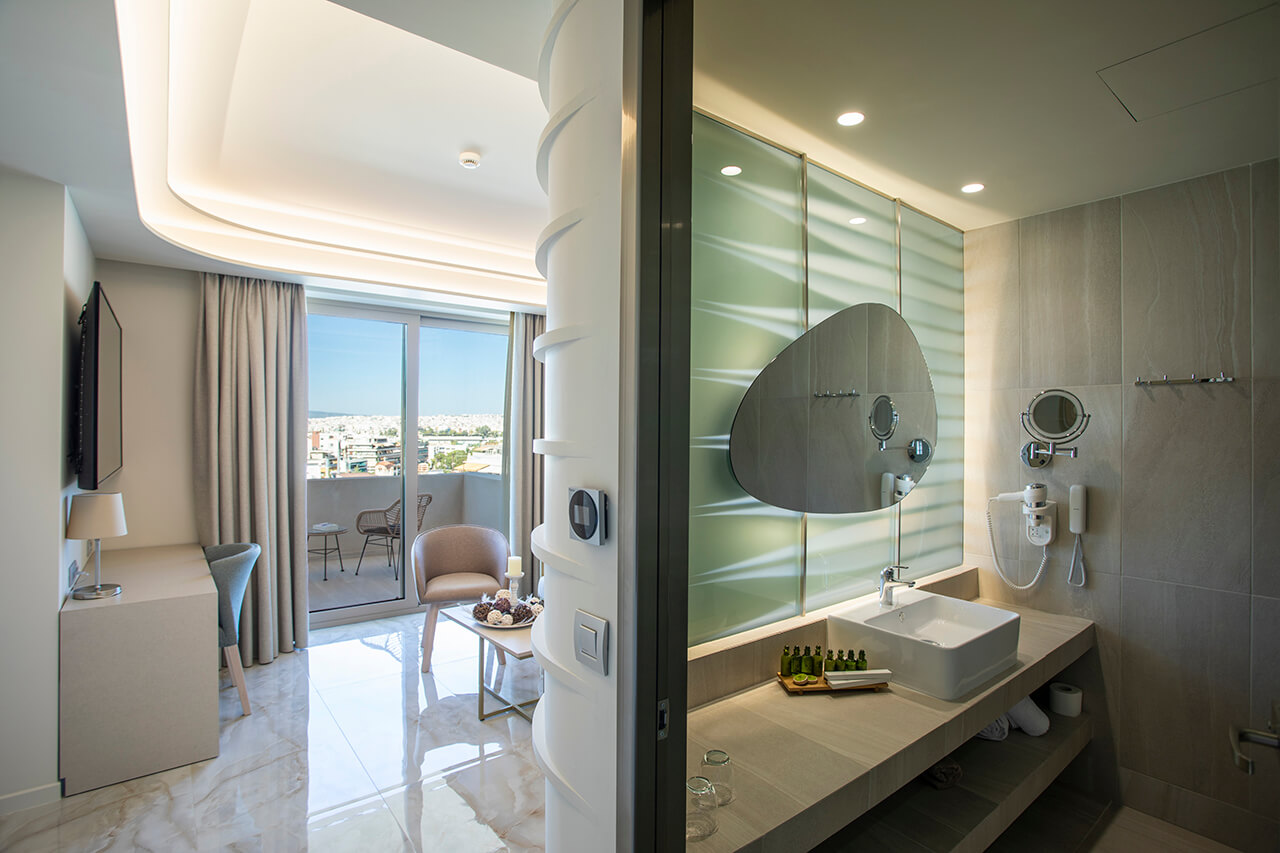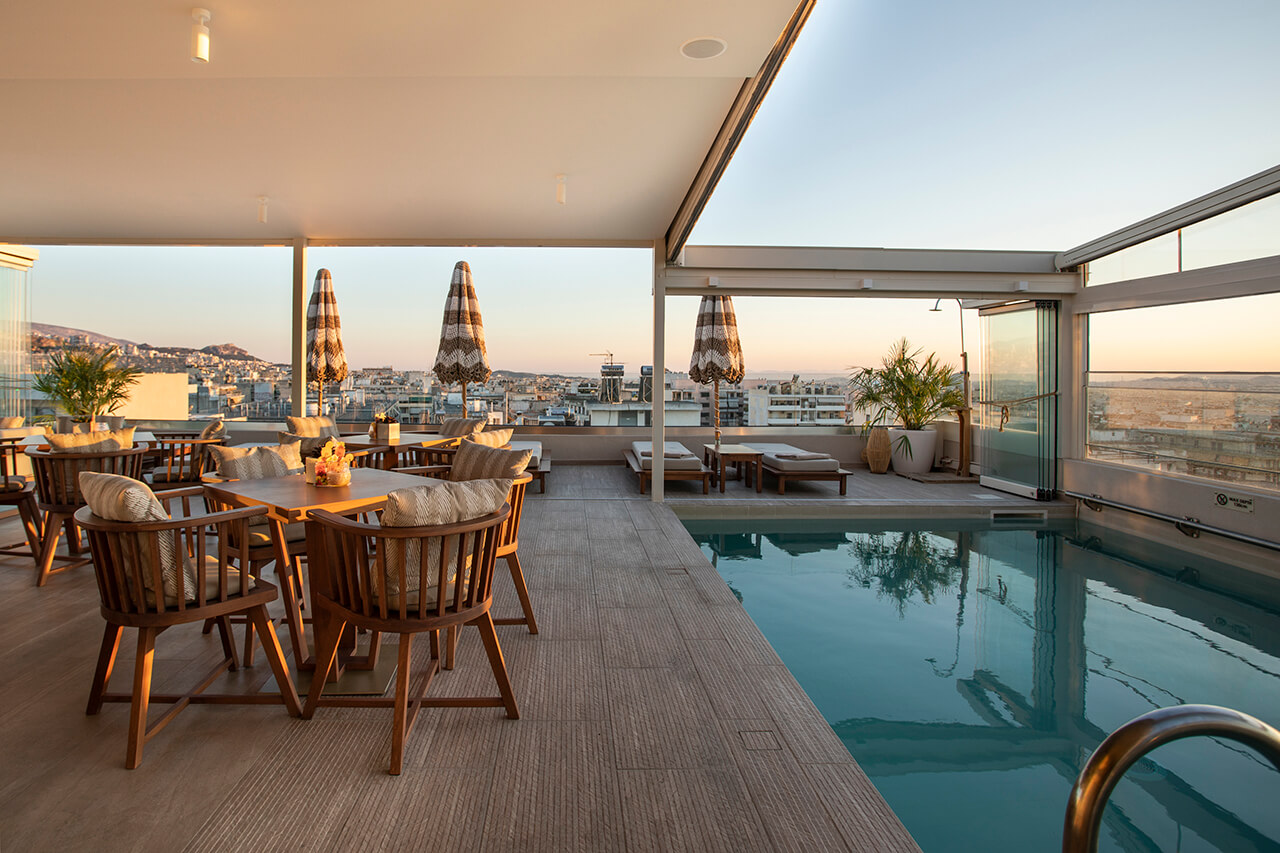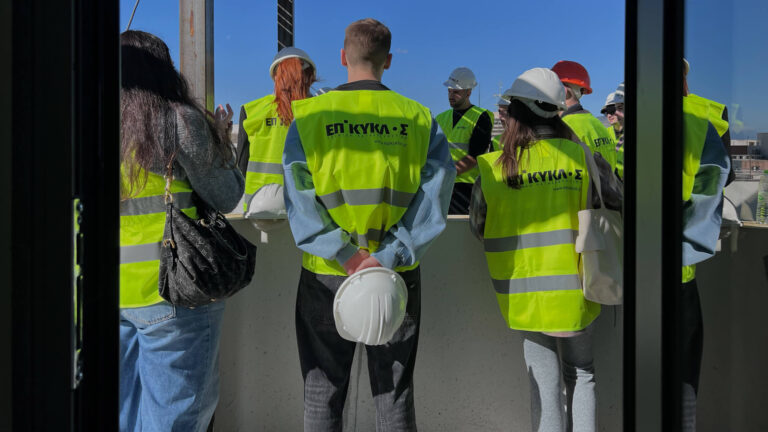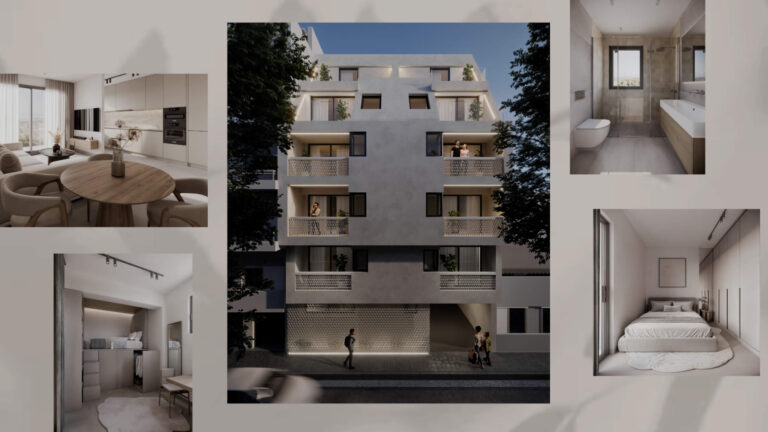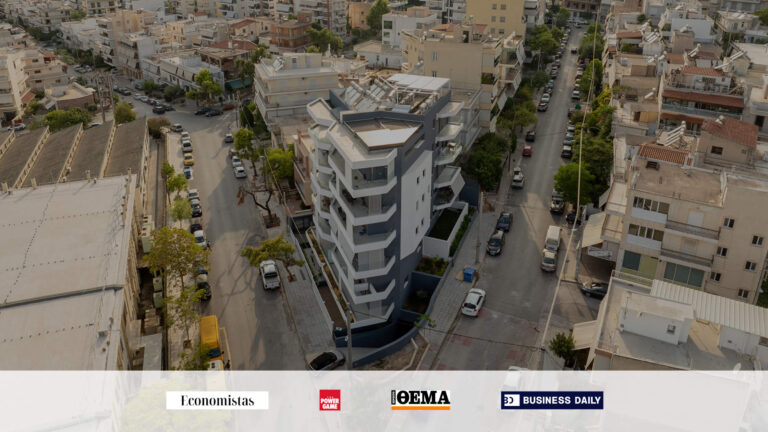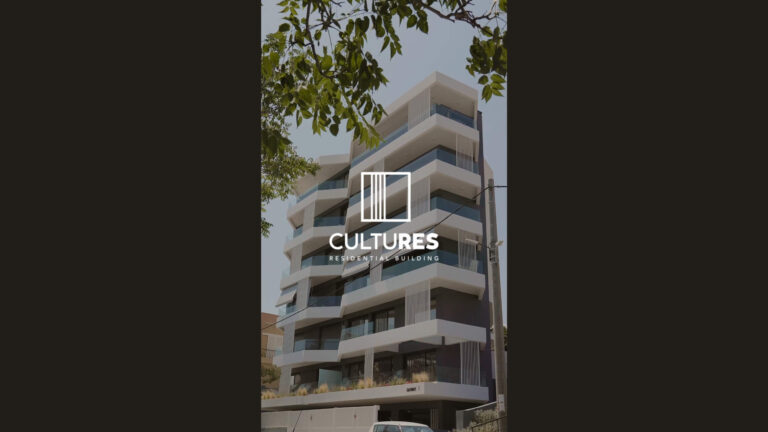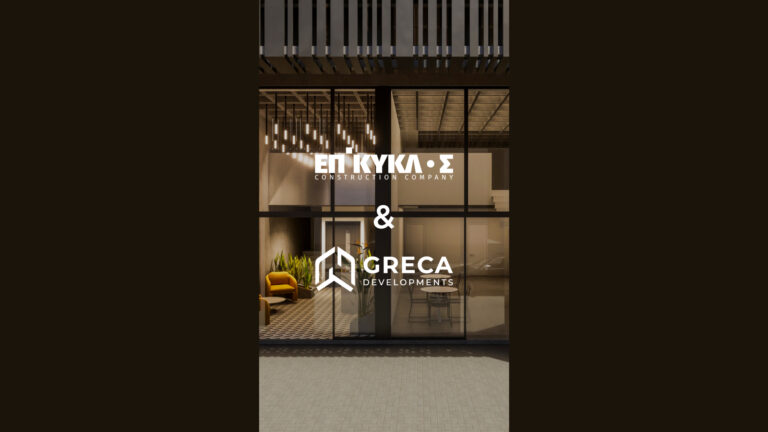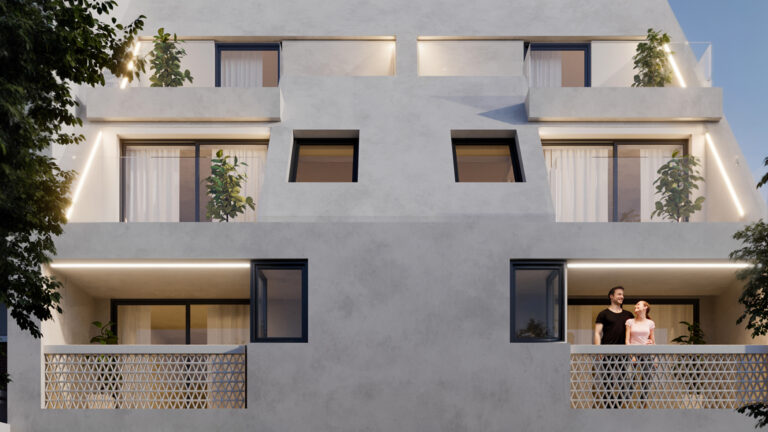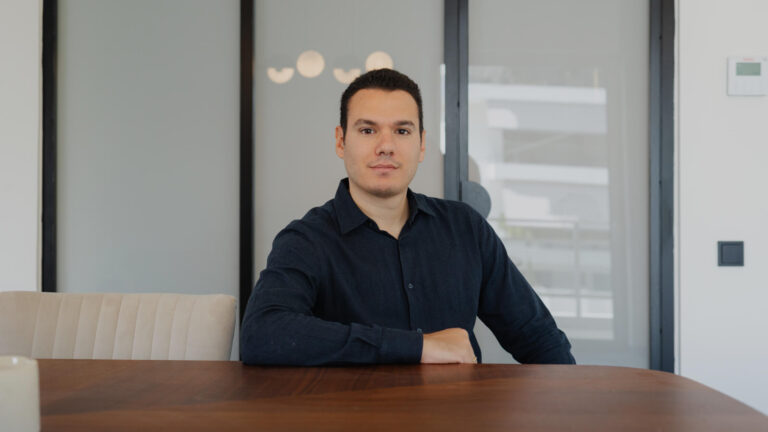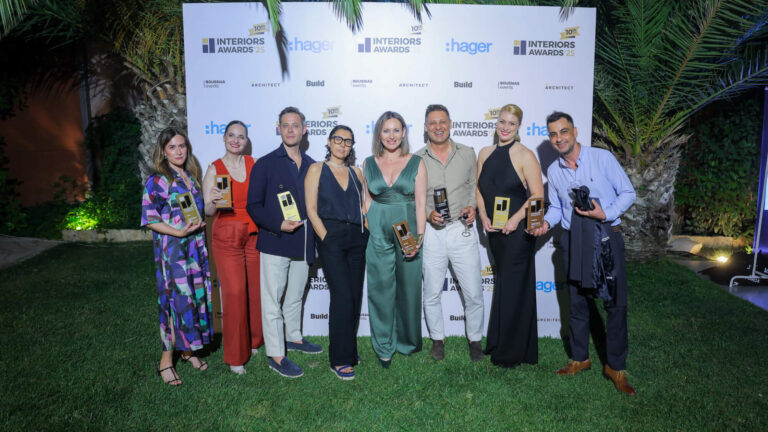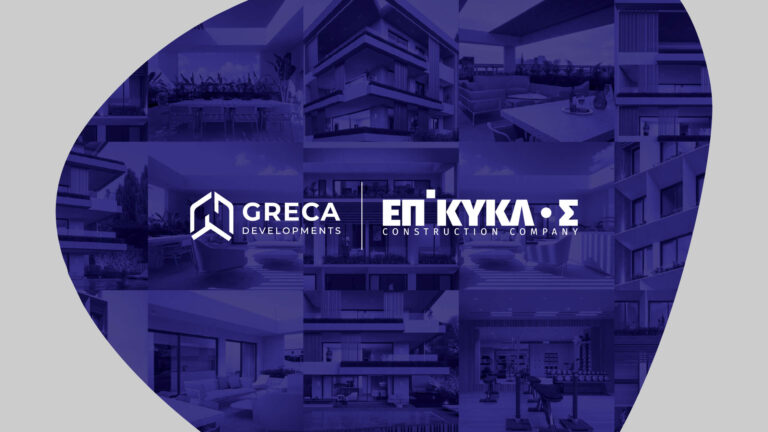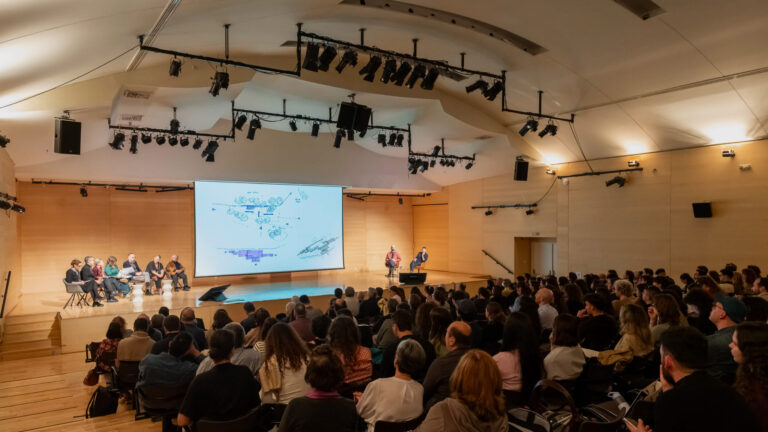Some of the residence’s elements we maintained were the oak floors, interior doors, and exterior frames. The living spaces were enhanced with wooden structures, a library, and a mixed-use composition to provide functionality and harmoniously blend with the plaster decorations and artful interior frames. The bath was fully renovated, but we kept the original style by using Nestos marble.
Based on this and previous projects, how would you describe your collaboration with EPIKYKLOS?
We have worked with EPIKYKLOS on several projects, and our collaboration flows very naturally. That establishes a state of security and freedom that’s essential to implementing our architectural design.
In the Kolonaki Apartment, for example, there were several special conditions we had to meet through precise coordination. Most tasks had to be completed in a short timeframe in the midst of a busy central district with limited flexibility. Still, the EPIKYKLOS team responded quickly, with high precision and attention to detail.
The implementation followed the design strictly and successfully, fully achieving the project’s main objective.
What does it mean to you to closely cooperate with the construction firm from the beginning of a project?
It’s not very common for both the architectural designers and the construction experts to enter a project from its very beginning. However, when it occurs, it’s a positive thing because there is direct collaboration on technical applications before the final, more detailed design stages. At the same time, it allows for more efficient cost control.
In the Kolonaki apartment, we followed a more conventional process, meaning that the design preceded the selection and involvement of the construction firm. Nevertheless, construction carried on with the same smooth flow and coordination.
Essential to this was the presence of the construction site manager, Ms. Tsianta, as well as the work of the whole EPIKYKLOS team. Once more, they proved that, above technical and aesthetic results, it’s the people who make a project successful.
